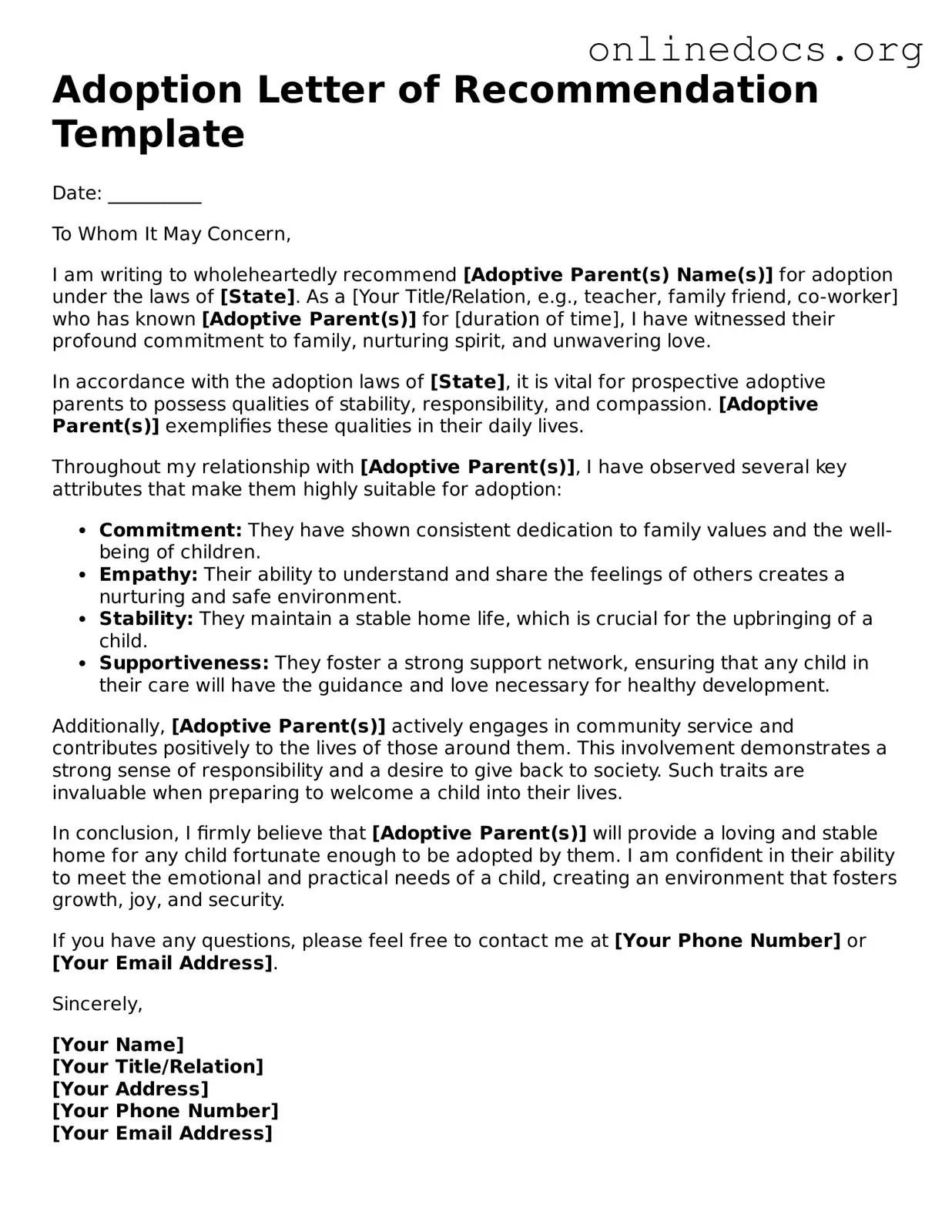The Adoption Letter of Recommendation form shares similarities with the Character Reference Letter. Both documents serve to provide insight into an individual's character and suitability for a specific role or responsibility. In the context of adoption, a character reference letter can highlight the prospective adoptive parent's qualities, parenting skills, and overall demeanor, offering a personal perspective that supports their application. The tone is typically positive, emphasizing the strengths and capabilities of the individual being recommended.
Another related document is the Personal Reference Letter. This type of letter is often written by someone who knows the individual well, such as a friend or colleague. Like the Adoption Letter of Recommendation, it aims to provide a personal endorsement of the individual's character and abilities. Personal reference letters can touch on various aspects of a person's life, including their relationships, work ethic, and community involvement, which can be relevant when assessing their readiness for adoption.
The Employment Reference Letter is also comparable. This document is typically provided by a former employer and speaks to an individual’s professional abilities and work history. While it focuses on job performance, it can also reflect personal qualities such as reliability, integrity, and interpersonal skills. These attributes are relevant in an adoption context, as they can suggest the individual’s capability to nurture and support a child.
For those interested in joining a sorority, understanding the importance of a letter of support is vital; a Sorority Recommendation Letter can significantly enhance an applicant's prospects by showcasing their strengths and qualifications from a recommending alumna.
Similar to these, the Academic Reference Letter is used primarily in educational settings. Written by teachers or professors, it evaluates a student's academic performance and character. For prospective adoptive parents, an academic reference can demonstrate a commitment to education and personal development, traits that are valuable in a nurturing environment.
The Letter of Intent can also be considered similar. This document outlines a person's intentions and plans regarding a specific action or goal. In adoption, a letter of intent might express the adoptive parent's commitment to providing a loving home and their vision for family life. It complements the recommendation form by detailing the motivations and aspirations behind the decision to adopt.
The Family Reference Letter holds relevance as well. Often written by family members, this letter provides a unique perspective on the individual’s family dynamics and relationships. It can highlight the individual’s ability to connect with others and provide a supportive environment, which is essential for raising a child.
The Volunteer Reference Letter is another document that shares similarities. This letter is written by someone who has worked with the individual in a volunteer capacity. It often emphasizes qualities such as compassion, dedication, and teamwork. These traits are particularly important in the context of adoption, as they indicate the individual’s willingness to engage with and support others, including children.
Lastly, the Professional Recommendation Letter is relevant as well. This document is provided by a professional acquaintance and speaks to the individual's skills and character in a work-related context. Like the Adoption Letter of Recommendation, it can reinforce the individual's qualifications and readiness for the responsibilities that come with adopting a child.
